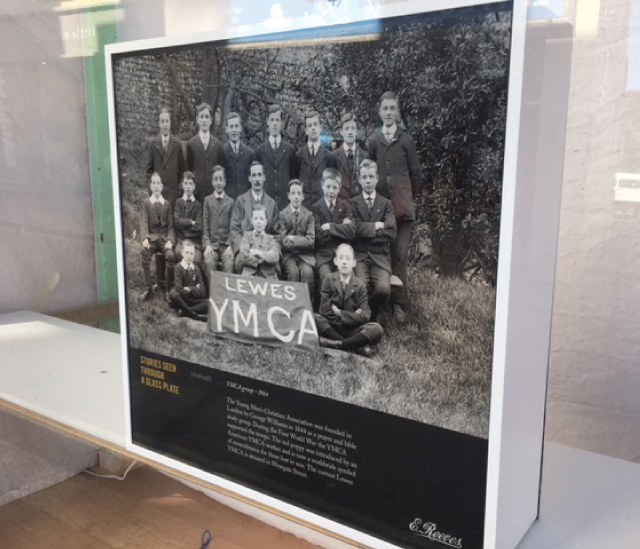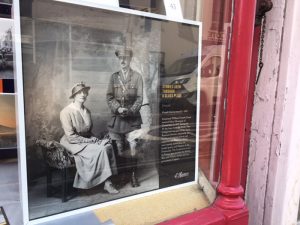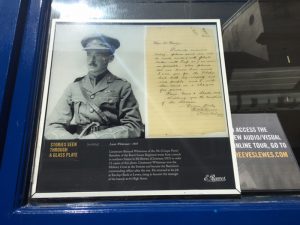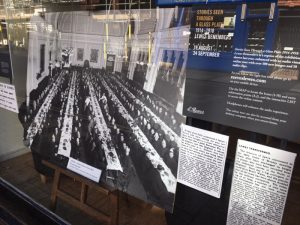New images from the world’s oldest photographic studio have been released with the launch of an online audio visual tour which allows people to explore more than 150 images showing life in Lewes, East Sussex, during the First World War with a commentary from period newspaper reports, letters and memories.
Brigitte Lardinois, Senior Research Fellow at University of the Arts London (UAL) based at London College of Communication, has been working with the Edward Reeves Studio of Lewes in East Sussex – the world’s oldest continually operating photographic studio (c.1855 – present) to open up the business’s remarkable archive.
‘1914 -1918: Lewes Remembers’ is a street exhibition of 80 light boxes displayed in 67 windows of shops and houses during August and September. It shows images that cover the First World War period and includes portraits of individual soldiers or family groups, group portraits of the many thousands of men billeted in the town, as well as photographs of civilian life during the war, all displayed in places relevant to the subject.
In October 2016, the exhibition began with a simple showing of 80 light boxes. The trail has now been completed with the addition of a new online audio visual tour. Accessible on mobile devices or on home computers, the tour includes new and highly evocative images and audio clips that illustrate life in this market town during the First World War. Much of the new material is the result of the work of a team of local volunteer researchers and family stories prompted by the first showing of the lightboxes.
Working with Tom Reeves, the great-grandson of founder Edward Reeves, and his wife Tania Osband who currently run the business, Lardinois has begun the process of revealing over 150,000 glass plates, the work of the first three generations of Reeves photographers. This unique archive, dating back to about 1855, includes many related ledgers and account books which allow the subject matter of the photographs to be identified. Also preserved are original backgrounds, equipment and studio accessories. The Victorian daylight studio is still in daily use for current photography.
Lardinois said: “The Edward Reeves Archive is a treasure trove of photography and huge credit is due to the Reeves family who have preserved it. UAL are working with them to open up the archive and share 150 years of local history. In digitising the collection, we are turning it into a resource for photography enthusiasts and scholars as well as our UAL students, providing new insights into the history of photography and social change.”
Professor Elisabeth Edwards, Research Professor in Photographic History and Director of Photographic History Research Centre, De Montfort University said: “The study of this hitherto hidden archive is one of the most exciting developments in the history of British Photography.”
This project has involved working with over 50 local volunteers on different aspects of the project, to make accessible the unique accompanying photographic ledgers. These detail who are in the images, where they were taken and how much they cost. Such historical details are almost always unavailable for this type of archive, as although photographic plates have often been preserved, the corresponding paperwork has mostly been lost.
The project has been supported by a small Heritage Lottery Fund grant and funding from the UAL and local private and public sources – but is remarkable in its use of local volunteers, making this project ‘the family album of Lewes’.
In addition to this there was an exhibition in the Edward Reeves Studio Gallery of work by five generations of the Reeves family – Edward, Benjamin, Edward M, Tom and Isaac. On show was an engaging collection of modern and historic images, photomontages and colourisations, as well as some original equipment.
This story was submitted by Brigitte Lardinois











